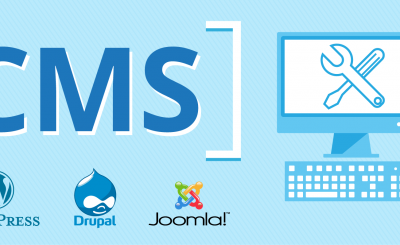WordPress Introduction and Step by Step Web Development in Easy Way [Full Tutorial]
Description:
WordPress Introduction and Step by Step Installation in Easy Way. WordPress is an open source Content Management System (CMS), which allows the users to build dynamic websites and blogs. WordPress is the most popular blogging system on the web and allows updating, customizing and managing the website from its back-end CMS and components. WordPress Introduction and Step by Step Web Development in Easy Way.
WordPress Introduction and Step by Step Installation in Easy Way
What is Content Management System (CMS)?
The Content Management System (CMS) is a software which stores all the data such as text, photos, music, documents, etc. and is made available on your website. It helps in editing, publishing and modifying the content of the website.
WordPress was initially released on 27th May 2003 by Matt Mullenweg and Mike Little. WordPress was announced as open source in October 2009.
Author Writer: Arshad Sultan [ Expert ]
Author Uploaded: Arshad Sultan
WordPress Introduction and Step by Step Web Development in Easy Way
Features:
User Management:
It allows managing the user information such as changing the role of the users to (subscriber, contributor, author, editor or administrator), creates or delete the user, change the password and user information. The main role of the user manager is Authentication.
Media Management:
It is the tool for managing the media files and folder, in which you can easily upload, organize and manage the media files on your website.
Theme System:
It allows modifying the site view and functionality. It includes images, stylesheet, template files and custom pages.
Extend with Plugins:
Several plugins are available which provides custom functions and features according to the users need. With over 50,000 plugins in the WordPress repository.
Search Engine Optimization:
It provides several search engine optimization (SEO) tools which make on-site SEO simple.
Multilingual:
It allows translating the entire content into the language preferred by the user.
Importers:
It allows importing data in the form of posts. It imports custom files, comments, post pages and tags.
Tutorial About:
1> How To Install WordPress [ EasyWay ]
2> How To Use WordPress [ Latest To Old Version ]
Advantages:
- It is an open source platform and available for free.
- CSS files can be modified according to the design as per users need.
- There are many plugins and templates available for free. Users can customize the various plugins as per their need.
- It is very easy to edit the content as it uses WYSIWYG editor (What You See Is What You Get is a user interface that allows the user to directly manipulate the layout of the document without having a layout command).
- Media files can be uploaded easily and quickly.
- It offers several SEO tools which make on-site SEO simple.
- Customization is easy according to the user’s needs.
- It allows creating different roles for users for the website such as admin, author, editor, and contributor.
Disadvantages:
- Using several plugins can make the website heavy to load and run.
- PHP knowledge is required to make modifications or changes in the WordPress website.
- Sometimes software needs to be updated to keep the WordPress up-to-date with the current browsers and mobile devices. Updating WordPress version leads to loss of data, so a backup copy of the website is required.
- Modifying and formatting the graphic images and tables is difficult.
Surprising Statistics About WordPress Usage
- 48% of Technorati’s Top 100 Blogs Are Managed With WordPress
- 74.6 Million Sites Depend on WordPress
- WordPress-Related Keywords Score 37 Million Searches Per Month
- 40 Translations of WordPress
- 22% of New U.S. Registered Domains Run on WordPress
- WordPress.com Employs Only 229 People
- 6 New WordPress.com Posts Every Second
- WordPress Developers Charge $50/hr
- 29,000 WordPress Plugins and Growing Daily
- 98 Versions of WordPress to Date
- 46 Million Downloads of WordPress.org
- WordPress Is Most Popular With Business Websites
Prerequisites:
Before you start with this tutorial, we are assuming that you are already aware about the basics of PHP & MySQL, Web Servers (WAMP, LAMP, XAMP, and MAMP). If you are not aware of these concepts, then we suggest you go through our tutorial on PHP & MySQL.


